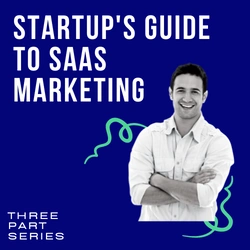Complete Content Marketing Guide For Beginners: The Foundation, Formula And Future Of Your Brand
Table of Contents
If you’re interested in digital marketing and in making a name for your brand online, then you must understand how to properly use content marketing.
Content marketing is the backbone of the biggest success stories over the last decade. I’m referring to companies like Zomato, Canva, ThinkGeek, HootSuite and even Blendtec.
It’s not surprising that so many brands are focusing on content marketing, given the average ROI is twice any other type of digital marketing.
Running digital ads will increase your brand awareness and help you build sales. But content marketing will not only increase your brand visibility, but build your authority and trust.
Content marketing is a complex and broad term that encompasses a number of different strategies and activities. In order for it to be successful, you need to have a firm understanding of what it is, how it works and how you can best adapt it to work for your particular brand and buyer persona.
I’m going to break down how content marketing works, why it’s critical for your business, and exactly how you can harness it right away.
The complete marketing formula you’ll learn today can be adapted to your brand relatively easily, allowing you to build authority as well as a list of avid readers. Remember, authority in your subject directly relates to more trust and higher sales.
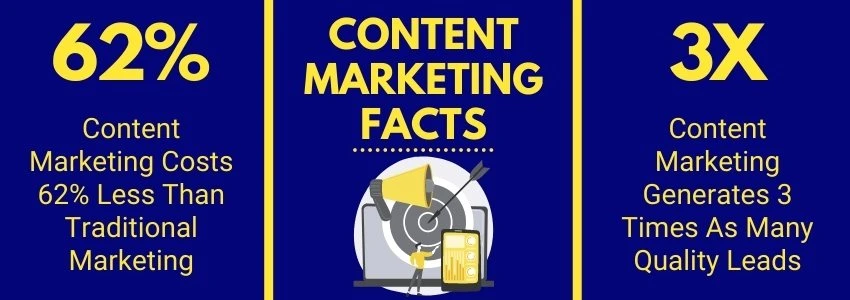
Chapter 1: What Is Content Marketing?
There’s a chance you know the term already, but please bear with me in case there are aspects of the definition you may have missed. After all, to learn anything, we must first make sure we’re all on the same page to start.
At its most basic, content marketing is the process of using content in order to market a website. This means that you could consider SEO (search engine optimization) to be a form of content marketing – in as much as you are creating content that Google will be able to index. This way, your content is making your site easier to find, and thus it is a form of marketing.
Content marketing can also be seen as a crucial aspect of social media marketing. Most social media marketing strategies involve sharing posts and links on Facebook, Twitter and Instagram, and very often these will include content that is on the brand’s own website.
Take a look at the highly popular Facebook Page IFL Science. This page posts science news by sharing blog posts from its own site. This ensures that liking the page provides readers with a constant stream of interesting information, and it helps to gain more likes as a result.
But the objective of content marketing goes beyond simply getting people to your website. All these uses for content demonstrate one key fact: the internet runs on content. The reason that people search for topics on Google is because they are looking for either information or entertaining. Both those things are examples of content.
By filling your site with great posts, you are giving people a reason to like your Facebook page. What’s more, is that you are giving Google a reason to add you to its search results. Google wants to pair its visitors with the top sites and resources on the web. In doing so, that is how it is able to provide value and that is what will keep people coming back.
But if your site is filled with great content, then you are also giving people a good reason to come to your site directly. In other words, content marketing that is good enough will eventually cut out the middle man. Content marketing that is good enough will encourage visitors to bookmark your site and to visit it regularly as part of their routine in order to see what new posts you’ve uploaded and what more they can learn.
Essentially, you are filling your site with value.
Once someone is visiting your site directly and without being encouraged to do so by an advert or by Google, then they have evolved beyond being a simple visitor. Now they are a fan. They are actively choosing to engage with your brand, so they must really like the type of content you provide, your style of writing or the topic that you cover.
This takes your site to a whole different level, and that’s not even the whole story.
Chapter 2: Why Content Marketing Is Critical If You're Selling Anything
Content marketing doesn’t only create brand loyalty and give you a big audience to sell to, it also gives you more trust and authority.
Think about your favorite celebrity. Someone that you really look up to, whose work you admire.
Imagine if they recommended a certain item of clothing, or a certain health supplement. Would you be more likely to buy it?
The answer for the general population is yes. This is why the shoe that Under Armor designed with mega-star and massive online influencer Dwayne ‘The Rock’ Johnson was the fastest selling for the brand in years.
The shoe: The Rock Delta, had the considerable advantage of being recommended by someone with a huge audience and a huge amount of authority and trust within that community.
After the global success of The Rock Delta, Under Armour wisely signed Johnson as a brand ambassador, and a year later the actor/influencer launched his own line of Under Armour clothing.


The objective of content marketing is essentially to build that kind of trust and authority directly. Instead of working with an authority, you are going to become that authority.
How Content Marketing Creates Fans And Not Just Buyers
I’ve covered how the basics of how content marketing works, so now it’s time to dive into the details.
What is the precise process that converts a first-time visitor into a rabid fan? How does content marketing take someone from a ‘cold lead’ all the way to a ‘buyer’?
Well, first, the content is what will help your new visitor to discover your site. They will search for a specific topic and your site will come up in the Google or Bing search results. Or maybe instead they saw a post of your content on Facebook that a friend liked or shared. Either way, they’ll then click on the link and read your site, but this alone isn’t going to be enough to turn them into a real fan.
In fact, they’ll likely just leave your site and not come back. They will probably scroll down the page so fast they don’t even see your logo, and then they’ll just navigate away as soon as they’re done. If your site visitors are leaving your site too quickly, you’ll experience an uptick in bounce rate and that could actually hurt your Google rankings. For more on that, click here.
Days, weeks or months will pass, and the same thing will happen a couple more times. Occasionally, they will end up on your site. It’s at this point they’ll start to recognize some of your branding, and they’ll note that you are running a well-informed authority website. They’ll make a note of the name of your brand and the next time they search on Google they’ll look for your site’s name in the search results.
Now you’re building some serious brand awareness!
If they continue to be impressed, then they’ll eventually consider actually bookmarking your page or just occasionally checking the homepage to see what’s new. It’s at this point that they might subscribe or that they might follow you on Facebook or Twitter or check for your content on Pinterest.
And it’s at this point that you just took your visitor from being a cold lead to being a warm lead.
And now, when you come to sell something, they will be highly likely to be interested. Not only will they be the first to hear about it, because they’re reading your content regularly; now they’ll also know who you are. With that comes trust you. Now they are confident that you are an expert.
Imagine if you read the website of a photographer every week and the photographer shared tips about how they create the perfect photos, what tools they use and how every job is important to them.
If you read this often enough, you’ll likely come to respect that photographer’s point of view, and you’ll know at least that they have a deep understanding of their craft, and they take it seriously.
Now imagine that you need someone to take some photos for your website, wedding or another event. Who would you consider asking first?
This is the power of content marketing, and it’s something that you can see used effectively in countless sales funnels and by many other marketers.
Think of it this way: if you landed on a website and the very first thing it did was to try and sell you something, what would you do? You’d probably leave! You never asked to buy something and more to the point, you have no reason to trust the person selling. It looks like spam and you leave.
This is considerably different from being a long-time reader of a blog and then learning that the writer also has a book out. This is a much less invasive way of discovering a product and more to the point, you know something about that blogger, you know that they know their stuff, and you can trust them. They have built a brand through their content marketing, and that means you’ll feel much more comfortable handing over your cash.
I like to think of this in terms of dating. Trying to sell to someone without first establishing trust and authority is just like approaching a stranger in the street and asking if they’ll come home with you! They don’t know you, they don’t trust you, and they’re annoyed at the interruption to their day.
But if you have done the groundwork by chatting, dating and demonstrating you’re a nice person, then you’ll earn the right to ask them home.
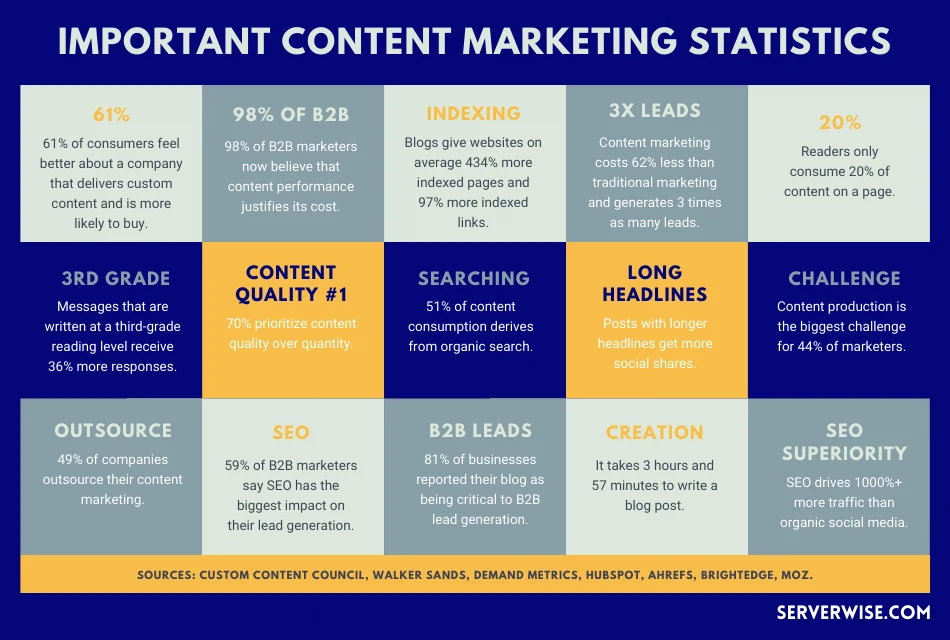
Chapter 3: Let's Talk Numbers & Logistics
Now you know what content marketing is, why it matters and how other creators are using it to grow their visibility and their trust, all while making more sales.
The next question is what you actually need to do on a day-to-day basis to grow your site and build that trust.
- How often do you need to post?
- Which types of content should you provide?
- How long is an ideal blog post?
That’s what we’ll be examining in this chapter.
The Different Types of Successful Content Marketing
- Games
- Images
- Infographics
- Live Video
- Music
- Podcast
- Tests & Quizzes
- Video
And even within the most basic written version of content marketing, you still have many forms: from the trashy, short-form humorous content that is shared on BuzzFeed, to the more in-depth, challenging pieces shared on something like Brain Pickings.
Then you have content that will be around forever, also known as ‘evergreen’ and content that is very contemporary and temporal – such as breaking news.
Each type of content has its advantages and disadvantages, and depending on your audience and your goals, you are going to take a different approach to regularity, length etc.
But for the most part, it’s likely that you’re going to want some form of blog. Even if you make video marketing a big push, you will likely do this in addition to a blog. For that reason, we will assume for now that this is the route you are going to take.
Now, don’t get hung up on the word ‘blog’. You may not call your blog, a blog, at all. You may have ‘Articles’ or ‘Musings’ or merely ‘Content’.
In any case, the frequency of your publishing and the tools and resources you’ll use are pretty similar.
Frequency, Length and More Factors
Frequency – Consistency Is Key
If you want to build a following on your blog, then you need to be frequent and consistent. This is an absolute priority, as failure to post regularly will quickly result in your visitors losing interest and no longer looking up your site. If they check several times and your site is the same as it was last time they looked, then this means that they will be likely to give up.
The very minimum you should be posting then is once a week. If you do this, then you should also post on a consistent day and make sure that you are always on time.
But while you can get by on one post a week, this is very much not the best strategy. What is far preferable is that you aim to produce multiple blog posts in a single day. Failing that, you should aim for at least one blog post a day.
That might sound like a lot, but the proof is all around you throughout the internet. Think of the top blogs that you like to read on a regular basis: how many blog posts do they have? In all likelihood, they probably post multiple times in a single day, or at the very least a single time a day.
If you are an entrepreneur hoping to make money from your brand and plan to use a blog to establish your credentials and expertise, then writing your content and promoting it is absolutely critical. And you cannot stop – ever. You can’t take a month off from content creation.
And if you want this to be your full-time job, then you need to treat it like a full-time job. You can’t get a full-time salary from 2 hours of work every week. So, learn to write well and learn to write fast.
Length
In terms of length, most SEO and marketing experts now recommend aiming for longer-form content. Anything that’s 1,500 words and over will be able to provide much greater depth and much more insight compared with something that is just 500 words.
If you’re going to write three articles relating to the same topic, each 500 words, I strongly suggest you combine them into a 1,500 words long-form piece of content. Slap in a table of contents and watch how much Google and your readers enjoy it.
Longer posts tend to be better at creating trust and authority, and they also get shared more. What’s more is, long posts stand a greater chance of getting pick up by Google for the search giant’s curated ‘news’ section. Your content appears on Google’s news section and your visibility and authority skyrockets.
The only problem is that writing one or more posts a day at 1,500 words each becomes a rather impossible task for most brands and most bloggers. So, when first starting out as you build your blog, I suggest you focus on writing shorter content – 700 words or so to build your content foundation. And create a few longer ones a couple of times a month in the beginning.
Even though I just told you how Google prefers long articles and pieces of content, you must make sure it’s varied. If you post an article of 1,800 words, be sure your next one is 800 – 1,000 words. This mindfulness will keep your content appearing natural and organic – conversational in fact.
This also has another added benefit, in that it will allow you to keep your content looking more natural and organic.
When every post on your website is similar in size and structure, this can be a problem from an SEO perspective. To Google, too much consistency doesn’t look organic. After all, Google demands that all content be conversational. Written by a real person for the direct benefit of other real people. Google’s algorithm has decided that if all of your articles are similar, they could not have been written naturally, and instead you are attempting to game the Google search rankings.
Whereas, if your content varies in length, it shows that you’re focused on delivering good content for your readers without concern for how it might impact your SEO. And this is exactly what Google wants to see each time they spider your website content.
Other Forms of Content and Advice for Scheduling
If you’re going to be posting other types of content as well, then these might adhere to slightly different schedules. YouTube videos for example, will more likely be once a week (this is fairly standard for YouTube creators), while social media posts should certainly be multiple times a day.
Depending on your available time, the size of your brand and the platforms you are working with, this might add up to a lot of work. In that case, you might need to become a little more strategic in considering how you will go about your marketing.
For example, you might find that you can benefit from scheduling posts. WordPress itself and many social media platforms allow you to create posts and then set them to post at a specific time. For those social media sites that don’t support this feature, you can use external tools like IFTTT.com or Buffer. This way, you will be able to ensure that your site has a steady flow of new content, even on days when you run out of time or perhaps inspiration.
Another tip is to consider creating a content marketing scheduling calendar. This basically outlines all the content you need to create and shows you when and how you will post it. This will help you to ensure your marketing strategy fits within your routine and your schedule, and can that way help you to avoid missing posts or getting bogged down with other work.
Remember, if you don’t have time to write all the content yourself, then you can always use other creators to help you find the time. You can do this either by working with partners, or by using freelancing sites and webmaster forums where people will advertise their skills. Make sure you pay a little more and use only the very best content creators – anything less can hurt your brand.
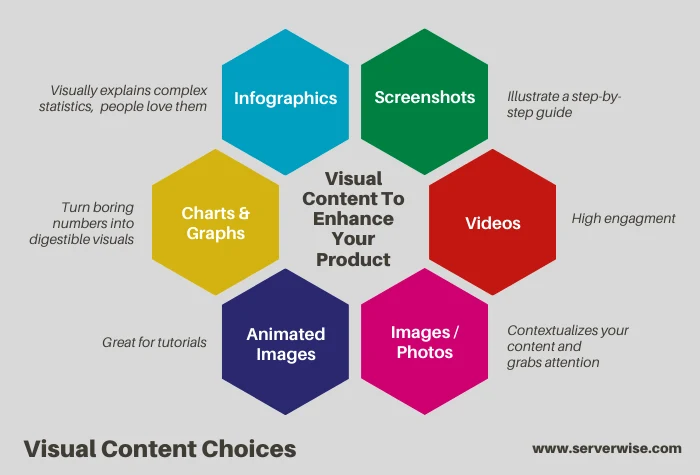
Chapter 4: Creating First Class Content
Adding content to your site alone is not enough. What is absolutely essential is that said content represents value. If it does not, then you might as well not bother.
So how do you ensure that the content on your site is top quality and that it is good enough to make sure visitors want to keep returning and that they will consider buying from you?
The Anatomy of a Great Post
Your aim is to provide value, but what’s also important is that you do this in the shortest time possible. This way, your blog post is even higher value.
Why? Because for a free piece of writing, the only cost to the visitor is time. The amount of time they spend reading your post is time out of their day and time they could have spent doing something else.
So if they manage to get all the same value from your blog post, but it takes them half the time to get it, essentially they have gotten twice the value. This is just as though they had purchased a product for half price that provided all the same value as the full-price option.
This is true of all writing, and so this should clue you in to the first hallmark of a good writer: brevity. Or rather not brevity so much as efficiency. A good writer will communicate what they need to say as quickly as possible, with no need for fancy wording or round-about sentences. If you want to make a sentence better, often the best way to do this is to read through it and to remove the superfluous words.
And this is especially true when it comes to the web in general and digital marketing specifically. In other words: you need to be able to convey your meaning in as few words as possible because people are in a constant rush online and have been taught to have short attention spans. Online, we’re used to getting the information we want immediately and not having to wait around. Things are constantly flashing at us, and we rarely spend more than a few moments on a website. Efficiency then is key.
Does that mean that you should be typing in text-speak? Or just keeping everything as brief as possible? Does that mean that there is no benefit to a good vocabulary?
Far from it: because a good vocabulary actually allows you to say more with less. Meanwhile, phrasing your sentences in particular ways – sometimes less direct ways – will sometimes allow you to convey less obvious meaning. For example, choosing one turn of phrase over another might mean that your reader spends a little longer, but if it better describes the scene or better conveys the tone you want your message to carry, then those words were not wasted.
The objective here is not to make your writing as short as possible, but to say as much as possible in the most efficient and entertaining manner.
Be A Good Storyteller
Writing your content in a manner that is efficient is one strategy that is going to help keep your readers on your page and keep them reading. There are others you can use too, though, and this is where you need to start getting strategic.
One crucial tip is to use storytelling wherever possible and wherever appropriate. Storytelling means that you are making your content much more personal and phrasing it as something that happened to you or to someone you know.
So instead of talking about a technique to earn lots of money, you might instead talk about how you earned lots of money via a certain technique. This subtle shift will make anything you write about considerably more engaging – to the point that it has often been described as ‘SEO for the human brain’.
Storytelling is powerful because the brain has evolved to respond well to stories. Stories allow us to imagine ourselves in the storyteller’s shoes, which makes whatever is being said much more engaging, emotionally resonant and interesting. What’s more is that we like to hear how stories end: so if you start your story off dynamically, you can bet your audience is going to keep reading.
Telling stories will generally mean that your content adopts a more personal tone, which in turn will be more casual to your reader, and that creates familiarity which builds trust. This also lends itself well to a personal brand, which we’ll touch on in a moment.
Either way, though, make sure that your content is easy to read but that it also matches the tone and the nature of the niche you are writing for. Blog content is best when it is conversational, but only if that doesn’t undermine your authority. After all, some topics are so serious that a friendly conversational tone may come across as uncaring or insensitive.

Provide Lots of Value
We’ve already discussed the importance of providing value, but let’s just ram this idea home a little further: if you’re going to create any kind of blog post, YouTube video or infographic, then it needs to offer some form of value. Otherwise, you are just wasting everyone’s time!
So what does providing value really mean? Usually, this means that you will be offering information, entertainment, news or education.
Whatever the case, it is critical that you do this in a way that is creative and that offers something unique. This is the keyword, and this is the thing that many bloggers and SEO forget.
It’s easy to share information in a blog post. You could write about how to do press-ups or how to do basic SEO.
But at the end of the day, those posts won’t offer a ton of value. Why? Because we’ve heard it all before. There are countless posts out there that are very similar, and that availability drives down your value.
On the other hand, if you can provide something completely new – how about a new form of brain training that will result in greater physical strength, or what about a powerful hack that can save internet marketers money – then you will have something valuable to offer.
Don’t be generic. Don’t be derivative. Offer something completely new and that way you will be able to get people excited to read your blog posts or watch your YouTube videos.
Why Infographics Are Fantastic for Internet Marketers
If you’re looking for a fresh type of content to use on your own website, or to use for guest posts, then using infographics is a great choice. In this post, we’ll look at the advantages of infographics, as well as how you can get the most from them.
What is an Infographic?
An infographic is an image that conveys data and information in a graphical way that you can understand at a glance.
One thing to keep in mind when creating content for the web, is that a lot of people are in a rush when they’re online and don’t have time to sift through dense paragraphs of information. An infographic is the perfect antidote to this reality, then, as it lets people very quickly get the ‘gist’ of what you’re trying to convey at a glance.
Infographics are more attractive than simple charts or graphs though and will normally be a combination of various data visualizations alongside large typographic quotes, statistics and other data. When combined in this way, these can be very appealing and really draw the viewer in while presenting the data concisely and effectively.
These also make ideal guest posts because they’re unique and not easy to create. When done well, they look professional and elevate the site they’re on, which makes them a great bargaining chip.
How to Create an Infographic?
The good news is that there are plenty of tools online that make it very simple and easy to create an Infographic, and a lot of them are free. Alternatively, you can simply use some image editing software like Illustrator or even MSPaint if you tidy it up with some effects in PhotoShop afterward.
Consider this next time you’re looking for something new to add to your blog or site!
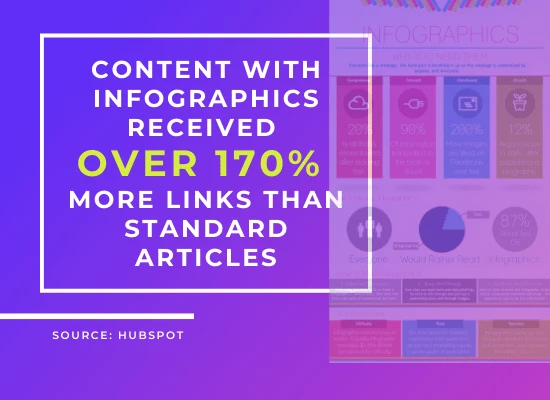
Why Content Is Critical To The Long-Term Success Of Your Brand
Good content alone is not enough to build trust and authority. It’s important for your ongoing success that you understand and accept this reality.
For content marketing to work, it is crucial that you have a great website and a good brand. This brand should be represented by a strong logo, and it should be driven by a strong mission statement. Your brand should perfectly identify the type of person who should be reading your site (the type of person who will appreciate your content) and it should qualify itself by implicitly stating who shouldn’t visit your site.
In other words, don’t try to appeal to everyone, but instead make a focused effort to build something that will appeal to a certain type of reader. This allows you to offer better value, and it means that for the right person, your site is going to be a highly exciting proposition. You want to create a blog that has its own ethos and principles, as this is what will help to create consistency between your posts (so that people know what your site represents) and so that they feel they can get behind your message. Brand consistency is very important.
Say you have a health blog, you can be all about the alternative ‘natural’ medicine, or you can be all about the scientifically proven medicine. It’s up to you which you go with, but make sure the audience knows what you’re about and make sure you’re consistent. This is what a brand is after all, and it is what will allow you to build the trust of a certain type of reader. You can’t please everyone, so don’t try!
Consider creating a personal brand if you are willing to put yourself out there. If you put your name and likeness to your site, then people will feel a little closer to you, and they’ll feel like they know you. That in turn creates a lot more trust and means they’ll feel they’re buying from an actual individual rather than a nameless company.
The only downside? You now have to live the lifestyle you’re promoting!
Chapter 5: Marketing Your First Class Content
‘Build it, and they will come’ is not a phrase that applies here. If you’ve spent ages working on your content and creating something you’re really proud of, then you need to get out there and market it in order to ensure that it gets seen. Remember, your visitors need to encounter your posts several times before they’re likely to consider themselves fans. It’s your job to ensure that that happens!
In this chapter, you’ll discover how to market a blog post just like a product.
Your Articles Are Your Products - How To Sell Your Site Content
Using SEO is a fantastic way to bring people to your site, and by writing great content, building lots of links and designing your site in a spider-friendly way you can get a lot more traffic from visitors who are looking for the information or the service you provide. On its own, though, SEO can only do so much, and is only one form of promotion.
When marketing anything, you need to have something to sell, and you need to make sure that your offering stands out among the crowd and piques attention. This is the way you need to be thinking when you’re trying to promote your site, and it’s what can really make the difference between a site people can find, and one that people can get excited about.
In short, you need to start viewing your articles as products and that means that you should be doing everything you can to ‘sell’ each one and the same way a business tries to sell any item or service. This simple cognitive shift will make a huge difference to the way you approach your content and ultimately to the success of your brand as a whole. Your blog is something you created, it has value, and now it’s time that you share that with your audience.
Here we will look at how you can go about selling your site products and how this can help you set your site apart.
The Title
When you try and sell an e-book through a website or a course, usually you will use a landing page that will utilize a sales script to try and make people buy what you have to offer. This might read something like ‘Finally, a simple guide to making money online – here’s my story of how I made thousands over-night’.
This is a great way to sell a product because it grabs attention, it promises results, and it has a personal interest element to it. And that’s how you should be writing each of your article titles – by creating it the same way you’d create a sales pitch and using all the same tropes. Don’t be afraid of long, bombastic titles – they sell.
For a little inspiration, we can look to the world of ‘clickbait’. These are articles that have titles that encourage curiosity and that sound amazing, and thereby ‘bait’ people to click them.
Unfortunately, most clickbait articles don’t offer the value to match the promise. This is where you’re going to be different: your posts really will be good, but you’re going to be a little more aggressive in demonstrating this in your titles.
Focus on the emotional aspect, the unique aspect, the shocking aspect and make it apparent from your title that this is something unique.
The Presentation
The way you present your content is just as important as the packaging on a new line of toys for Hasbro. If you want people to choose to read your content over another site’s content, then you need to use the best images and the best of the layout to make it a joy to read and so that it really catches the eye.
Give it a layout more closely resembling a magazine article than your typical blog post, and people will notice the difference. Use high quality images, use different fonts, and break your content up into paragraphs and sections.
You might even choose to get inventive. For example, you could experiment with ‘ergodic’ text, to make the text wrap and move around in different ways.
Presentation is powerful not only for helping to sell the content and make people want to keep reading, but also to help you create even more authority and make your brand more attractive and interesting than the competition.
USP
USP in business means ‘Unique Selling Point‘ and this describes the factor that makes a product different from others on the market. If your product is exactly the same as everyone else’s, then you don’t give your potential customers any incentive to choose you over the competition.
The same goes for your articles – so don’t just rewrite the news as you read it, or regurgitate related lists of tips. Instead, think about how you can take a different angle on the story, bring your own experience to the mix, or relate the topic to something different. That way you give people a reason to read what you’ve written even when they’ve heard the news already elsewhere.
Promotion
SEO will help people find your articles, but you should also try and promote your content and generate hype for it, in the same way that Apple might generate buzz for its next iPhone. You can do this in a number of ways, but generally this means talking about your article on forums, discussing it through social media channels and showing it on YouTube. That’s right, not just posting links, but actually talking about the article and demonstrating why people should care about it. It’s a subtle but powerful difference.
The following are some great places with proven track records of successful conversions to share your content.
- Facebook groups
- Forums
Be active in these communities and make sure that you aren’t only posting your own stuff. Members will start to realize that you’re only in the group for your own personal gains and nothing more. So get involved!
Iteration
The iteration cycle in business is a process of subtly tweaking a product over time in order to perfect it in response to market feedback. The point I’m making here is that you don’t have to just release your article and be done with it. You’ll want to tweak it and improve it based on feedback and performance. This will ensure it’s the best it can possibly be, always up-to-date (which Google appreciates) and is well suited to your audience and readers.
Likewise, you can also keep selling older content. If you have evergreen posts on your site, then why not remind people they’re there? Why not post them to forums? Especially if something has happened to make your old content more timely or relevant. If you put lots of hard work into your content, there’s no reason to share it just once and then forget about it… keep on posting and reposting.
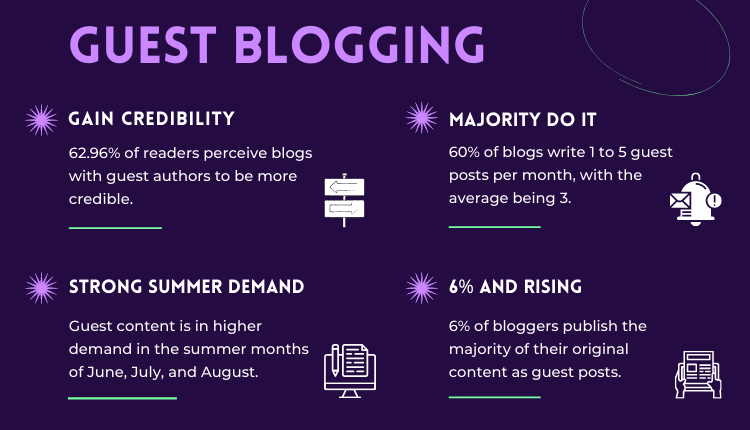
Guest Posting
If you want to increase the visibility of your website as well as your position in the SERPs, you’ve undoubtedly researched and found out there are many ways to accomplish it. Which method is best for you, and which one should you focus on?
I’m going to suggest you start out by focusing on something you can do right that will not just increase your position in Google, but also build your online reputation – guest blogging.
Guest blogging is, essentially, just an extension of what you have already been doing. Only now, you are also sharing your content with people who aren’t coming to your site. This is an alternative way to get that ‘first exposure’ and that first opportunity to get people to start visiting your site of their own volition.
What is Guest Blogging, and Why Should it Interest Me?
Guest blogging essentially means posting on other people’s blogs. Here you find a blog or a website that you like and that you think is somewhat similar to your own (but hopefully has a little more prominence) and then you offer to write them an article in response to a link back to your site.
They publish your piece, and at the bottom you will get a little author bio that will include a link back to your website.
Normally when you think about ‘link building’ this will mean submitting articles to content farms and sites like E-Zine articles, or it will mean submitting them to link directories that no one reads. On the other hand, with guest blogging you have a chance to get your links onto some genuinely excellent websites that can not only help increase your page rank, but also help to bring you organic visitors and increase your reputation.
How to Find Sites
The first challenge is how you actually find the sites that are willing to publish your posts in exchange for a link. This is actually often easier than you might think however and if your content is genuinely good, and your site will offer value to the readers of the blog you are targeting, then you might be surprised to find that these blog owners are guys just like you who are willing and able to help you out.
To find the right sites to approach, you should simply message a few of the sites you currently read yourself. At the same time you can try searching your niche (e.g. ‘bodybuilding’) and a phrase that indicates they are looking for guest posts, e.g.: ‘bodybuilding submit your article’, or ‘bodybuilding guest poster’.
Make sure that they have the same values as you however, that their site is good and that a post here will gain you exposure to the right kind of audience!
Another great strategy is to see what your competition is doing. One way you can do that is by using the technique called ‘follow that blogger’ in which you simply find a guest blogger who is posting on the same subject as you, and then just search for all the different blogs that they have already posted on. No doubt these blogs are accepting guest posts in your niche, and will thus be highly likely to accept yours. You can also just search for all the inbound links on another site and just see if any of those were obtained through guest blogging.
Some Tips for Successful Guest Blogging
Being successful means not just finding the blogs, but actually getting accepted. Here are some tips to help you do just that:
- Mimic their editorial style – this is important to ensure that your content fits with the content of their blog, and that their readers will enjoy what you make for them. This means ensuring that you use the same style of punctuation, avoid 1st person narrative if they do, and generally mimic them as closely as possible. They may have a page of editorial guidelines which it will pay you to look at.
- Research the article well – meanwhile, you of course need to just make sure that your article is good. Don’t give them your leftovers, give them articles that it hurts you to part with.
- Be a more complete partner – don’t just offer them an article, but state that you’d like to work with them, and make sure you at least mention their site on your site as an inspiration.
- Make sure your site is spot-on – when someone includes a guest post of yours with a link, they are putting that link on their front page in most cases. It’s important then to make sure that your site is one that they are willing to recommend, so ensure that it’s professional and that you offer value to their visitors.
- Meet them – struggling to get a response? Try arranging a virtual or in-person meeting. There are many ways to do this. You can meet partners at networking events for example, or if you’ve targeted someone in particular, you can even consider ‘hiring them’ for advice or consultation. Once they’ve talked to you about something else, they’ll be much more likely to respond.
Chapter 6: Ways To Get Quality Content Without Writing It Yourself
If you’ve made it this far, then you’ve probably worked out that the internet has not run on content. Content is what makes the wheels go round – it is what Google uses to index your pages, it is what readers come to your pages for, and it is what sets a great site apart from a good site.
As such, your site is going to live and die on the quality of its content. If you don’t have compelling and entertaining things to read on your pages, then you can’t expect to keep your visitors for very long or to draw in new readers.
Thus, it follows to that you should spend a fair deal of your time developing content, or alternatively that you should be investing some of your profits into buying original high-quality content.
The more content you host, the more there will be to read and the more readers you’ll get. So imagine then how useful it might be if you could get your content for free – by getting your visitors to write it for you themselves.
Luckily, you can and there are actually a number of techniques to entice your own readers to create content for you.
Convince Your Site Visitors to Write Content For You
One of the very best ways to get more content for your site without putting in huge amounts of work yourself is to get your visitors to write it for you! This surprisingly effective strategy can be accomplished with some of the following strategies I’ve listed below – mix and match and use them all!
You Don’t Know if You Don’t Ask
One very easy strategy for getting visitors to write your content for you, for instance, is simply to ask them to. This might sound a little too good to be true, but actually most people aren’t trying to make money online and so aren’t aware of the value of writing. All they know is that they like your site, and that it would be exciting to be a part of it and to be a contributor. Publish their work, and they get some exposure and something to show their friends, while you get free content to bring more traffic – everyone wins!
Competition
If you want to add a little incentive, though, then you can always offer a prize for the best content you get by running a competition. Competitions are great for marketing and people love the opportunity to test their skills. Add in the possibility of some form of gift, and you’ll find that people jump at the opportunity to get involved.
Community
Another way to get people to provide you with free content is to provide them with a platform for discussion and chat. This could be a forum, or it could be a comments’ section on your individual articles, but if you give visitors somewhere to discuss the subject, then you’ll find it quickly amounts to a lot of content that provides more for the search engines to index and more value for readers who come to the site.
E-Mails
This is one that you are less likely to have heard of: publishing e-mails you receive. If your site gets big enough, and if you write informatively on a topic, then you are going to get questions from time to time from fans and people who want to discuss the subject. You can help them out by answering, and then ask for permission to publish the whole conversation and that way gain more content to print.
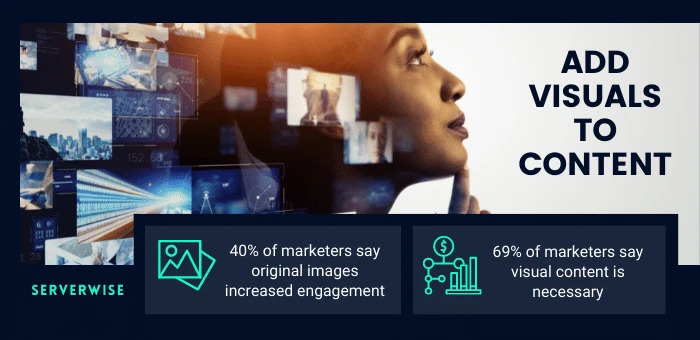
Quick Start Guide to Fast, Effective and Quality Content Creation
Another option for speeding up content creation and still providing value is to use content curation. The essential idea behind content curation is simple: you are making blog posts and pages that are entirely composed of other content you have found around the web. You can then recombine this content in order to create something new, along with adding your own commentary and context to make the post more interesting and to add your own value.
But how do you go about doing this? And how can you make it a quick process without risking making your posts less interesting or useful for your readers?
The Objective
The first thing to do is to understand the objective of good content curation. Your aim here is to create a blog post that provides several times the value of a conventional blog post because it combines the best parts of many posts into a single resource.
This makes it very important that you carefully consider the type of content you are sharing. This should be content that is meaty and interesting, and you need to ensure that you have something interesting and useful to say about it. It is not enough to simply post a selection of copy-pasted snippets from other sites at random.
Remember: duplicate content won’t rank highly in Google. This is not our objective here though: our objective is to provide something useful for our visitors and to keep them coming back!
Some Tips
In theory, content curation can save you time by allowing you to create content by reusing content that others have already made. Theoretically, this then means that you can save time because you don’t need to write all the content yourself.
But the problem is that you need to head out and find all that content. It needs to be interesting and high quality content (meaning you’ll need to sift through the unsuitable stuff) and you then need to be able to add some kind of interesting commentary and tie it all together. When you consider all these jobs, it becomes apparent that this can actually end up taking a long time.
A solution then is to try hiring someone to collect the content for you so that you can put it together and then add the commentary. Consider using a VAS (virtual assistant service), many of which will charge less than $5 per hour!
Another tip is to make the most of the fact that you are borrowing content. Get in touch with the original owners of that content, and they may be able to help you promote the page as a way of saying thanks, and they might even link to you! This can also prevent potential copyright issues.
Follow these tips and remember to offer value in all your posts, and content curation can be a great way to save time and get more done!
Chapter 7: Tools & Resources For Your Content Marketing Success
There are many aspects to content marketing. While it might sound simple – it’s just ‘writing’ for the most part after all – it is actually much more complex than that when it comes down to it. A good blog post needs to be well written, well edited and proofread, attractively arranged and then adorned with images. It then needs to be given the right SEO tweaks and the right tuning in order to look the part.
This all takes time and practice, but the right tools can help you to get things up and running more quickly. Here then we will look at a few of these different kinds of software and how they can help you in running your site.
Word Processing Software: A good word processor can help you with your content marketing this by correcting mistakes and through useful features such as word count, the ability to insert formatting and more. Arguably, Microsoft Word is still the best, though Open Office provide a good free alternative. You’ll be spending a lot of time here, most likely, so make sure the tool is one you’re happy to work with!
Alternatively, use Google Drive with its built-in Google Docs and that way you’ll also benefit from the highly powerful addition of cloud sharing. This allows multiple people to edit a site together, which will make a big difference if you have lots of people collaborating.
Grammarly: If you struggle with your writing style, then a tool like Grammarly can help by making suggestions to fix and improve your grammar, spelling and punctuation. The result is more readable and more SEO-friendly content!
LanguageTool: A handy, open-source free plugin for your browser. I replaced my Grammarly account with LanguageTool and never looked back.
Paint/Gimp: For your photo editing and your image design, you will need a good piece of editing software such as these two. Paint is the most feature-rich photo editing/design software out there, but Gimp can mimic a lot of what Paint does and is free of charge. If you are making logos, or editing images to accompany articles, then it is worth learning just a little about using this software. Combine this with good photography skills, and you’ll have an endless supply of images to add to your articles.
Illustrator: For professional design, you’ll want to use something that allows you to create vector files. These are images that don’t lose quality no matter how much you enlarge them, and that will allow you to edit them easily after-the-fact. Pixlr Editor is a good, free source with a strong premium upgrade option to get started.
Filezilla: Filezilla is a free piece of FTP software. In other words, it will act as a bridge between your computer and the server space you bought with your hosting package. This then allows you to access all the folders on your website and to delete them, rename them, replace them, edit them etc. just as you would if they were on your computer. It’s the fastest way to make edits to your site and the best way to keep all your files organized. There are many other FTPs out there that can do a similar job, but Filezilla gets the mention here for being completely free still and highly functional.
Of course, you’ll likely use WordPress as your main CMS (content management solution) but you’ll want Filezilla when you accidentally damage your WordPress site or when you want to manually edit an image. It’s good to have!
Web Stats: Getting some kind of stats regarding your website is crucial if you want to maximize your visitors and if you want to tailor your site to the audience that are actually going there. The best way to do this is with the free ‘Google Analytics’ which you access through your browser. Pay attention to search queries and the specs/location of your visitors, and it will help you to promote your site. Then use this to tweak and improve the content you’re writing. Don’t be ruled by SEO, though!
Video Editing Software: There are various types of video editing software out there, though for many of your needs Windows Movie Maker will do fine. This is handy if you want to add videos to your site, or use them as part of a marketing strategy – which I highly recommend you do!
Canva: Another alternative type of content we’ve touched on is infographics. Canva is a great tool that will allow you to quickly build professional looking infographics that people will be attracted to and that will share like wildfire.
Scheduling: For scheduling posts so that you have a steady stream of content coming in, Buffer and IFTTT are two of the best tools out there!
Chapter 8: Reasons You Should Include Content Marketing In Your Overall Ad Strategy
Believe it or not, there was a time when advertising on the radio was the very best way to expose your brand to a large audience. This was the number one way to reach the greatest number of people, and nothing else came close. Then, one day, the television was born, and radio advertising became old news. You may have heard the song about it by The Buggles.
Now history is repeating itself. For the past few years, we’ve been watching as traditional advertising methods like television and print media get gradually overtaken by content marketing. The web is the new star of the show, and content marketing is the most powerful tool that small businesses and massive corporations alike have available to them on that platform. That’s why businesses are investing more and more into the process every year. It’s also why 51% of B2B marketers plan on increasing their content marketing budget in the next 12 months. It’s what you call ‘the circle of life’. You may have heard the song about it by Elton John…
Hopefully I’ve convinced you over the course of this book that content marketing is the future of digital marketing and that it deserves a place in your strategy. But if not, here are four more powerful benefits of content marketing to make you reconsider.
Reason #1: It’s Cheap and Easy
Content marketing can work within any budget. For a small start-up, creating a compelling blog and doing some basic SEO (Search Engine Optimization) is an easy and affordable job that can cost as little as necessary. On the other hand, though, larger scale operations can invest more into content marketing along with SEO and SMO (Social Media Optimization) in order to create a truly formidable online presence. The lower overhead means that this method is particularly scalable and ensures you get the best return on investment possible.
Reason #2: It’s Versatile
The variable cost of content marketing is just one example of how flexible content marketing is. There are a range of different ways you can use content marketing to reach your audience, but likewise there are also a range of different uses for it. Content marketing doesn’t just have to be about generating sales, it can also be an invaluable tool for generating leads, for building trust and even for opening a dialog for crowdsourcing purposes.
Reason #3: It Focuses on Relationships and Narrative
If you really want to reach an audience and encourage them to take action, then you need to appeal to them on an emotional level and convey your value proposition. This is precisely what content management allows you to do.
Furthermore, content builds trust, it creates relationships, and it gives your business a voice. Content marketing allows you to craft your reputation with great precision, create a ‘personality’ for your organization, and ultimately convey a much more powerful message. This is a fantastic strategy for those with their eye on the long-term, aiming to build long-term relationships with their customers and clients.
Reason #4: It’s Growing
Content marketing is highly popular right now, but it’s only going to gain momentum as time goes on. The number of people carrying web-enabled devices 24/7 is still growing, with no signs of slowing down. Likewise, new social platforms are continuously providing new opportunities, and we’re getting better and better at creating the kind of content that provides real value for visitors.
So, there you go: that’s just four reasons to ensure content marketing is a big part of your strategy moving forward. The average business currently spends $379,600 a year on this form of marketing; a number that’s growing all the time. How does your budget compare to that?
There’s No Time Like the Present
With all that in mind, it’s time to get started and to invest some time and some resources into your own content marketing strategy. That means creating your own content marketing schedule, writing blog posts on a regular basis, and then sharing that content on other sites.
It means having a great site and blog to begin with to create a brand that people can invest in. It means coming up with content that is unique and interesting, and then actually marketing that content just like a product.
If you do all this and focus on quality, then you will build a rabid fan base. And once you’ve done that, you’ll start to see this rewarding and enjoyable form of marketing pay you back in huge dividends!



It’s the sales page where the magic happens. This is the page that gives you a return on your marketing investment. It is on this page where we convert visitors to paying customers. Do you know the valuable elements of a high-converting sales page? You will soon. Keep Learning >

You have a prospect with a credit card in hand. They’re already in a buying mood. Why not maximize your per sale revenue potential by putting a related offer in front of them. Using these 7 tactics, you can increase your sales starting today. Keep Learning >


